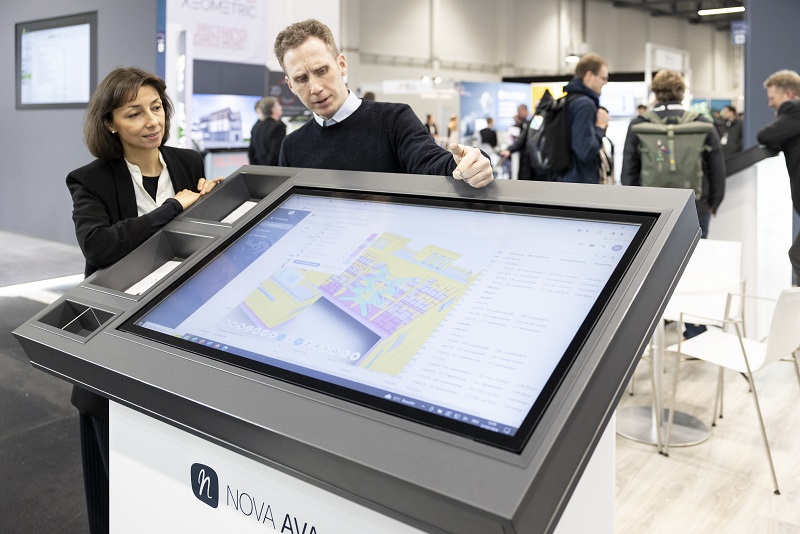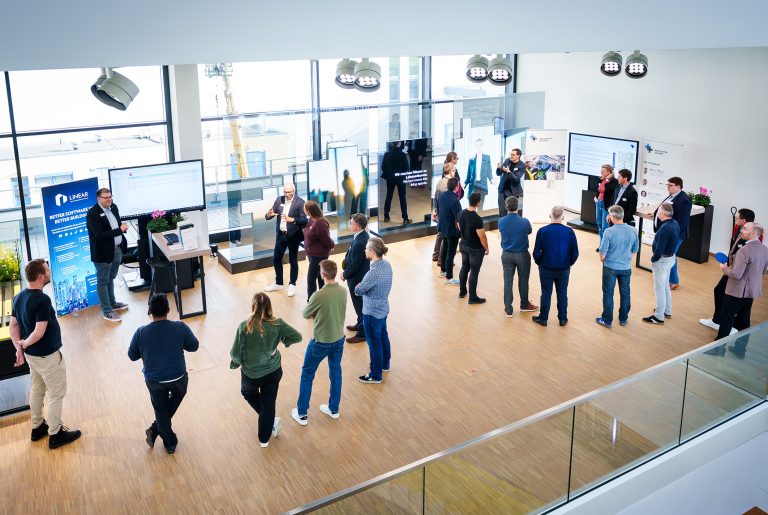The construction sector is undergoing profound transformation. Driven by increasingly stringent environmental regulations and the urgent need to conserve resources, circularity in construction is gaining significant momentum. At digitalBAU, taking place from 24 to 26 March 2026 in Cologne, digital technologies for circular construction will be presented as one of four key themes.
The facts highlight the urgency of digital transformation: According to the German Environment Agency, approximately 61% of all waste generated in Germany in 2022 consisted of mineral construction waste. Much of this material flows into low-grade recovery processes and amounts to nearly 208 million tonnes — a volume that must be significantly reduced.
Circularity is a crucial starting point. This is underscored by Cornelia Lutz, Senior Director Exhibitions and responsible for digitalBAU 2026: “Digital circularity is not an option — it is an urgent necessity. digitalBAU 2026 provides an ideal platform to demonstrate the potential of digital transformation for more sustainable and resource-efficient construction, while fostering the necessary collaboration between industry stakeholders.”
A Market in Transition: Between Mounting Waste and Future Opportunity
Despite the growing awareness of resource-efficient construction and rising recycling rates, a recent report by the N-Bau platform shows that only 14 percent of material resources in Northwestern Europe originate from recycled sources, and merely one percent of building components are reused. At the same time, the World Economic Forum forecasts that construction materials could enable up to a 75 percent reduction in CO₂ emissions over the next 25 years — representing a significant opportunity for the industry.
Digital Innovation as the Key to Circular Construction
Digital transformation plays a decisive role in enabling circularity. Building Information Modeling (BIM) has established itself as a central tool in this evolution. BIM-based circular design solutions make it possible to incorporate dismantling strategies and material reuse into the earliest planning stages of a building. This improves material efficiency and substantially reduces waste.
A key element in this context is the digital material passport, linked to 6D BIM models. These passports contain detailed information on the origin, composition and recyclability of all installed components. At the end of a building’s calculated service life, materials and components can be systematically returned to new value chains. The focus is not only on recycling but also on achieving nearly CO₂-neutral reuse.
digitalBAU 2026: Exhibitors Focus on Circularity
A wide range of companies will present practical solutions and new product developments dedicated to circular construction. These include software tools that simplify and standardise the creation of digital material passports through database-driven processes. In addition, highly specialised technology providers will showcase digital platforms for capturing and tracing building components and improving collaboration among all participants in the building lifecycle.
The supporting programme of digitalBAU 2026 will also place strong emphasis on the theme of “Circular Construction.” A special highlight is the German Construction Award 2026, which will be presented on the first day of the trade fair (Tuesday, 24 March 2026). The special category “Circular Construction” will recognise outstanding and holistic building projects that exemplify the principles of circularity.
< Back to Construction, Infrastructure
> Here is one of the places where the issuer of a news item is branded.
> Tap buttons or logos to be redirected to the issuers profiles or pages.






